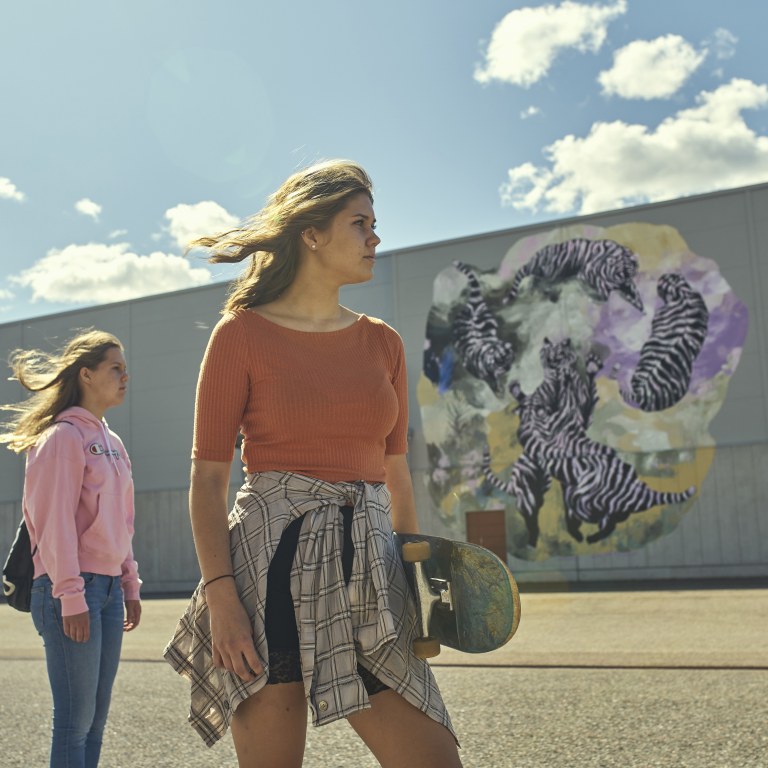Espoo boasts a rich history in innovation. The lessons learned in the past are helping the city and its partners pave the way towards a more circular, smarter, and cleaner future.
Collaboration lies at the heart of building resilience and adapting to the changes brought about by the climate crisis — no one can solve these gigantic issues on their own. In Espoo, the vibrant circular economy and cleantech innovation community stretches across industries, universities, and the public sector, with a shared ambition to build a more sustainable future.
In 2020, Espoo signed a global commitment on circular economy and stated co-operating in all divisions of the city as well as more than 40 partner and companies. There are also circular and sharing economy experiments for citizens, such as neighbourhood marketplaces and tool shares. However, the partnerships also look above and beyond the city borders: the innovations created in Espoo could spread across the globe.
PROVIDING PLATFORMS
Together with Aalto University and technological research centre VTT, Espoo is able to provide a shared platform to companies ranging from startups to corporations, researchers, students, and ordinary citizens to innovate, experiment, and execute.
One example of Espoo’s ambitious cleantech projects is Kera, a district that aims to set a new standard for sustainable smart cities. Kera will also serve as an example of how the cross-industry is used to execute the city’s sustainable development programme. The district will be a home to 14 000 people and companies, and it will be a testbed where companies are able to pilot and develop their clean and smart solutions in, for example, energy and built environment.
Another way for Espoo to reach its goal of carbon neutrality by 2030 is the RAKKE project. RAKKE is aimed at boosting collaboration between the public and private sectors and promoting innovation and business activities in cleantech, smart solutions, low-carbon transport, and circular economy. Together with 100 companies and developers, the goal is to build effective ecosystems for the local economy, ensuring that Espoo is a pioneer in achieving the Agenda 2030 Sustainable Development Goals.
Espoo has also, again in co-operation with VTT, Aalto University, Omnia, and others, embarked on a project called The Implementation Pathway for Environments that Accelerate Sustainable Growth to create concrete development environments to promote digitalisation and green transition. The project develops not only new services and products but also diversified forms of business and employment.
HISTORY IN INNOVATION
Although many of the initiatives are relatively recent, Espoo also has a rich history in innovation. For example, the forestry industry had been conducting trailblazing research in biomass processing in Espoo for decades. Now, VTT is continuing the tradition with Bioruukki, a piloting centre for new bio-based products and circular economy solutions. It supports business opportunities in fields like recycling and waste utilisation, sustainable metals and minerals recovery, and efficient biomass refining by offering expertise, research infrastructure, and technologies.
Other examples include Olefy, a VTT spinoff, and its patent-pending technology that can extract over 70% virgin grade plastic and chemical raw material components from plastic waste. Another Espoo-born company is Infinited Fiber, a company planning to build a commercial-scale factory to produce regenerated textile fibre for global apparel companies.
Meanwhile, the big local companies are also pulling their weight to create a carbon-free future. Microsoft and Finland's largest energy company, Fortum, are collaborating on the world's biggest waste heat recovery project for data centres. Waste heat from Microsoft's planned Espoo data centre will be converted into district heating for the benefit of 250,000 residents.
The universities are keeping busy, too: in August, a study conducted by researchers at Aalto University was published, showing how a strong, non-toxic, fire-resistant, and bio-based adhesive can be manufactured energy-efficiently and used to replace formaldehyde-containing alternatives in wood construction.
HEADING TOWARDS ZERO CARBON
In its efforts to develop new materials and circular and cleantech innovations, Espoo hasn’t ignored its own goals: ending coal burning in the city in 2025 and becoming entirely carbon neutral by 2030.
Huge steps have already been taken. For example, in 2021 a total of 300 city properties started using renewable energy, and the emissions per capita have been the lowest in the metropolitan area since 2017. In 2019, the city received the Energy Globe Award for outstanding energy cooperation, and Espoo is also on the A list of the world’s leading climate cities.
Circular economy plays an important role in achieving carbon neutrality. In 2020, Espoo signed a global commitment on circular economy, and in the same year, circular economy cooperation was established in all divisions of the city.
As said: no one can solve these issues on their own. In Espoo, there’s strength in numbers.
Image: Enter Espoo



